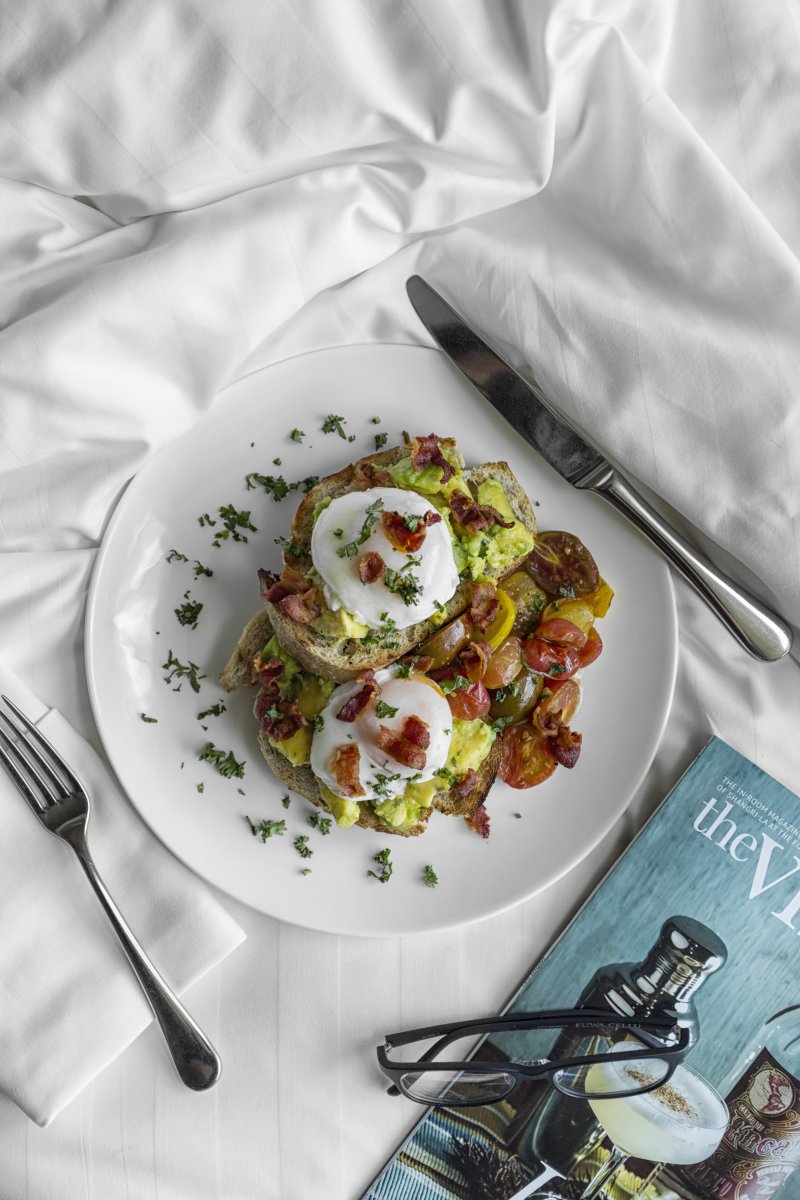“What was the most ridiculous room service order you’ve ever encountered?”
Shangri-La at the Fort’s executive assistant manager for food and beverage Simon Côté humored us with a highly intriguing answer. “Twenty kilos of chocolate to be melted in the bath tub of the guest for a liquid chocolate bath!”
The French-Canadian has helmed the brand’s premier flagship in Bonifacio Global City since a year before it opened, lording over its glamorous eateries and VVIP events. The Shangri-La brand is known to attract an A-list clientele, many with their eccentricities and out-of-this-world habits, making the perfect execution of an indulgent dip in a thick, sticky dessert one of the quirky demands of Côté’s job.
The Germans, it seems, are more difficult to crack. Michael Luedtke, director of food and beverage and culinary operations of Hyatt City of Dreams keeps decidedly mum. “If it is what the guest wants then it is not really ridiculous,” he quips.
Now, it’s not only important that their food is prepared well, but they also care about how it’s sourced and handled. Michael Luedtke says it’s not uncommon for guests to ask about the quality of their produce, if these are “for example: free-range chicken, MSG-free, GM-free meats, free-range eggs, or have organic components.” These requirements are something hotels now have to consider when they come up with their menus.
There was actually a time when these requests were not a priority. Côté admits that when he started in the industry, room service “was more of a commodity rather than an experience, providing the option and convenience to the guest of eating in their own room at any hour.” Choices were limited to simple continental fare, safe options that would satisfy most guests regardless of ethnicity and age.
Both Côté and Luedtke admit that Caesar salads, burgers, and club sandwiches will forever be part of their room service repertoire. However, many new habits and preferences brought about by a changing world is making in-room dining an integral part of the complete hotel experience.
Healthier world

Before the dawn of digital interconnection, the business traveler simply saw the hotel as a pillow to rest their weary head. Côté realizes how his role has considerably changed. “Guests can work from anywhere in the world and rooms have turned into an integrated working space.” Within this global workforce is also a growing diversity. Luedtke points out guests from emerging markets and, of course, women, too—quashing the business traveler stereotype of the middle-aged white male. This new breed of frequent travelers, according to him, may have “special dietary requirements.” But, more importantly, “they all expect to be satisfied.”
With affordable travel and greater accessibility to information, today’s travelers are more adventurous and sophisticated, and this reflects in their food choices. While local and Western comfort food will always be a staple, hotels are now trendier. “It represents the evolution of tastes across the globe with people traveling everywhere now,” Côté observes. “You can order the famous Indonesian nasi lemak or a shakshouka for breakfast in the comfort of your room in Manila.”
This awareness also leads to health consciousness. Now, it’s not only important that their food is prepared well, but they also care about how it’s sourced and handled. Luedtke says it’s not uncommon for guests to ask about the quality of their produce, if these are “for example: free-range chicken, MSG-free, GM-free meats, free-range eggs, or have organic components.” These requirements are something hotels now have to consider when they come up with their menus.
The nitty-gritty
This attention to detail does not end with the menu alone. With a determination to set their brands apart, hotels are constantly thinking of ways to give their service that extra oomph. Côté explains how Shangri-La has integrated their menu into their in-house magazine to make room service a lifestyle choice rather than a commodity. The in-room dining options are presented as in a food magazine—bright, enticing photos, complemented with vivid descriptions.
For those watching portions and with dietary restrictions, Luedtke addresses their needs by offering a “build your own” section, which allows guests to “choose between two sizes of their proteins depending on their appetite, choose their preferred carbohydrate source, vegetables, sauce or dressings, and even choose a method of cooking from grilling, pan seared, roasted or steamed.” For the fatigued traveler, Hyatt City of Dreams has an energy-boosting tea blend on hand. Meanwhile, in Shangri-la at the Fort, they tuck bags of jelly beans into your order as a sweet ending and a reminder of a happy childhood.
Listening to guest feedback and having their ears on the ground for trends, the current standards of in-room dining puts a premium on modern, exciting flavors as well as personalized service with a lot of heart.
Personal service, too, is given an upgrade. The kind of white-glove treatment formerly reserved solely for VVIPs is now extended to all guests. In Shangri-la at the Fort, for instance, servers are trained to be more aware of the guests’ moods and preferences, even how they wish to dine in the room.
“When arranging the tray or trolley in the room, we need to be sensitive towards the guest’s activity and convenience. Are they watching television, working at the desk, or enjoying the view?” Côté hypothesizes. “This sign of respect requires considerate thinking, and not always choosing the same location and setup. Convenience is a keyword here. This is about making the dining experience no-fuss. Just do it and gracefully depart while providing just the right level of service.”
In the lucrative hospitality industry where quick turnovers are a good thing, hoteliers are finding ways to slow down the pace and provide solace to frazzled travelers. Listening to guest feedback and having their ears on the ground for trends, the current standards of in-room dining puts a premium on modern, exciting flavors as well as personalized service with a lot of heart.